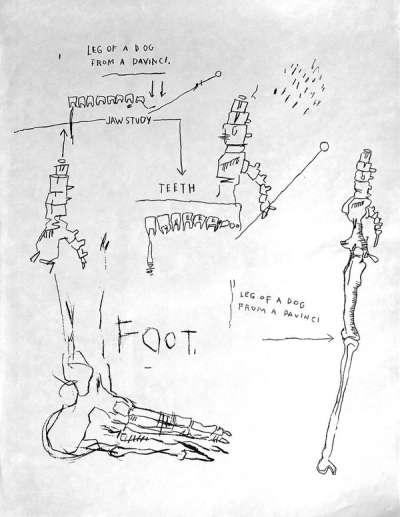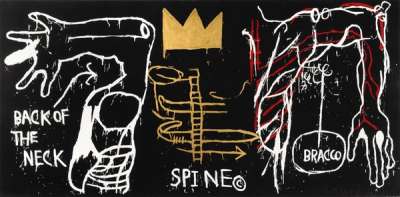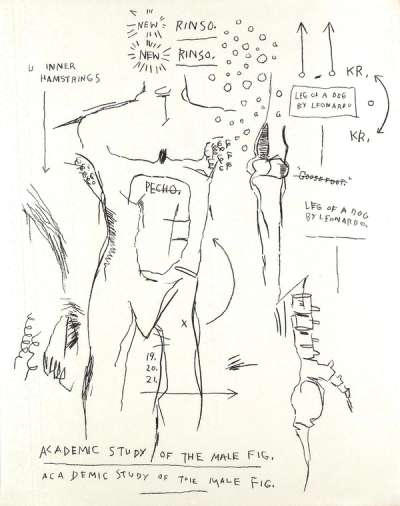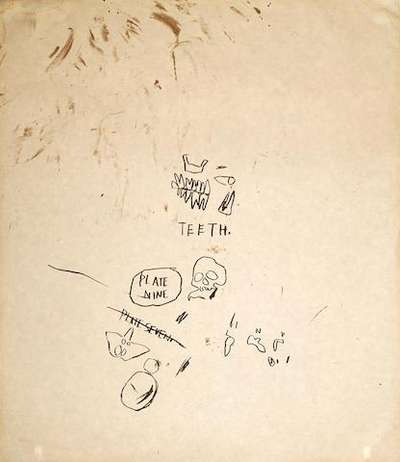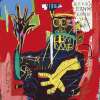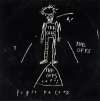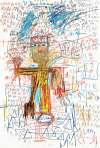Anatomy
Studies
Jean-Michel Basquiat’s fascination with anatomy is foremost in this collection of Anatomy studies, produced in 1983. Basquiat’s anatomical focus, paired with his frenetic style, allow his concerns with mortality, violence and racism to shine through in these prints after paintings.
Jean-Michel Basquiat Anatomy Studies For sale
Anatomy Studies Value (5 Years)
The Anatomy Studies series by Jean-Michel Basquiat features both signed and unsigned editions, which diverge significantly in value. Signed examples consistently command premiums, with hammer prices reaching up to £762675. Across the series, 33 total auction sales have been recorded, with an average annual growth rate of -5.73%. For collectors, edition type plays a pivotal role in value potential within this series.
Anatomy Studies Market value
Auction Results
| Artwork | Auction Date | Auction House | Return to Seller | Hammer Price | Buyer Paid |
|---|---|---|---|---|---|
 Back Of The Neck Jean-Michel Basquiat Signed Print | 1 Feb 2024 | Phillips London | £153,000 | £180,000 | £240,000 |
 Academic Study Of The Male Figure Jean-Michel Basquiat Signed Print | 24 Mar 2021 | Bonhams Los Angeles | £9,350 | £11,000 | £14,000 |
 Da Vinci, Leg Of A Dog Jean-Michel Basquiat Signed Print | 24 Mar 2021 | Bonhams Los Angeles | £9,350 | £11,000 | £14,000 |
 Untitled (Teeth) Jean-Michel Basquiat Unsigned Print | 21 Oct 2014 | Bonhams San Francisco | £3,145 | £3,700 | £4,650 |
Sell Your Art
with Us
with Us
Join Our Network of Collectors. Buy, Sell and Track Demand
Meaning & Analysis
This grouping of prints demonstrates Jean-Michel Basquiat’s well-documented fascination with anatomy, while also exhibiting the frenzied drawing style with which the artist. They were produced in 1983, in the same year that saw Basquiat selected for the Whitney Biennial alongside the likes of Keith Haring, Cindy Sherman and Barbara Kruger.
Back Of The Neck exhibits the kind of fraught and frenetic atmosphere that became synonymous with the artist over the course of his career. Lines of red denote veins and the warped white outline of muscles of the arms suggest painful contortions. The depiction of the spine, with its pointed and elongated vertebrae, similarly suggest discomfort and dislocation.
Produced in the same year as the beating and resulting death of black graffiti artist Michael Stewart, an event which would form a major influence on Basquiat’s work, the piece could be interpreted as an abstracted depiction of a wounded body buckling under pressure. Moreover, the use of the copyright symbol alongside ‘SPINE’ may confer a sense of the commodification of bodies and a trivialisation of suffering. The splatters of paint which appear to vibrate across the image evoke fury, despite the dignity radiated by the crown motif painted in block yellow at the top of the piece, often used by Basquiat as a signifier of Black resilience.
Leg Of A Dog is perhaps more similar in style and composition to the Anatomy series. Here we see annotated diagrams of a range of canine bones including intricate drawings of teeth, legs and feet. Basquiat draws the tiniest of details and indicates shadows with taught lines. The straight, fine lines and arrows which appear repeatedly across the image suggest needles. This piece could be contrasted with Dog Leg Study, where the artist’s sketches are situated further from anatomical reality and bombarded by slogans, colour and crossing out.
In Untitled (Teeth), the sketches are loose and scattered across the page, with a drawing of a skull casting a morbid spectre across the image. Similarly scattered in composition is Anatomy Of A Male Figure, which sees the depiction of a male body from the neck to the thighs, surrounded by seemingly random sketches of upper hamstrings and the leg of a dog. Adding to the anarchy of the composition is a reference to ‘Rinso’ which can be seen in his 1982 work of the same name, together with small circles appearing to float in front of the body, suggestive of effervescing soap.
